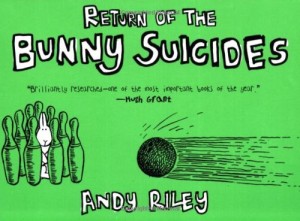An intense deluge woke us up briefly around 5:00 this morning. I think I was awake enough to say “Damn!” and fall back asleep. It reminded me of something that’s been bugging me.
I looked through the first few pages of Otherworld #2 in the comic store yesterday. As at the end of the first issue, one character made a big deal about how it never rains in L.A.
Admittedly, people drive as if it were true. It starts drizzling, and people freak out. Three days of rain is billed as Stormwatch 2005 on the TV news. Some years we don’t get much rain at all.
But every 7 or 8 years, we get drenched.
I’ve heard people cite this year’s near-record rainfall as an example of the extreme weather that climate models predict for global warming. While I do think there are plenty of valid examples, this isn’t one of them. We got just as much rain in 1997—eight years ago—when the UCI campus flooded, stairs turned into waterfalls, streets and underpasses became rivers, and one student infamously bodysurfed naked down the hill next to the Student Center. (A yearbook(?) ad later remarked, “Who says nothing happens in Irvine?”) We got nearly as much rain two years before that. I knew someone from Vermont who brought friends out to visit during the heaviest period of rain. They got their preconceptions handed to them.
Every once in a while the cycle skips. Those skips coincide suspiciously with droughts. I remember tons of rain and the occasional hailstorm in the early 1980s, then it was all dry until 1995.
The thing is, while a very wet winter is uncommon for Southern California, it’s not unusual. In fact, it’s very regular. I recommend looking up El Niño as a starting point.

